17. Ratatouille
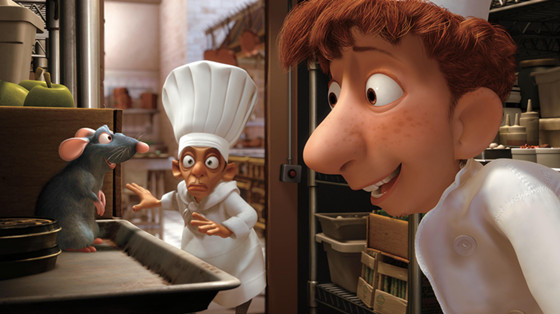
Ratatouille is part of what will be likely remembered as the golden age of Pixar movies, and maybe of modern animation in general. The protagonists are Remy, a rat with ambitions to become a chef, and his partner Linguini, who helps his animal friend to express his talent by secretly making him work in one of Paris’s most important restaurants.
The film was directed by Brad Bird, at his second Pixar film after The Incredibles, and before his turn to live-action films like Mission: Impossible – Ghost Protocol. Ratatouille is a great example of the Pixar formula: it tells a fun and adventurous story while also developing a insightful reflection on life and its difficulties, represented in this case by Remy’s struggle to become what a rat can hardly be, a successful chef.
Towards the end, the recipe of the title also becomes the representation of nostalgia and youth. Ratatouille shows a stereotypical but charming Paris, while often making us see the city in its hidden corners, through the eyes of Remy and the other rodents.
16. French Cancan
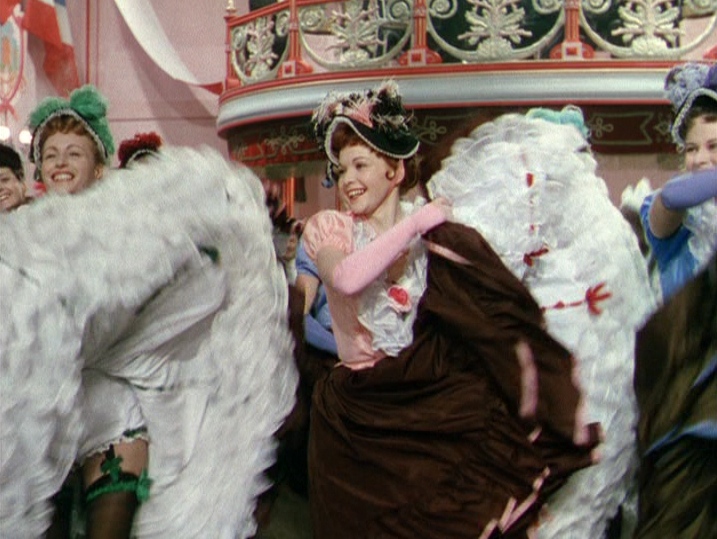
Jean Renoir, son of the famous Impressionist painter, is universally recognized as the director of some of the best movies of all time; only a few of his works, though, take completely place in the city of Paris. Among them there is French Cancan (1954), a musical comedy set during the end of the 18th century and inspired by the success of the Moulin Rouge and the rediscovery of the “cancan” dance.
The film is consciously a-historical and is driven by its musical numbers; it was shot in color, and one can recognize Renoir’s homage to the Impressionists’ approach to subjects and color.
The story is permeated with “joi de vivre” and steers away from the social commentary that had characterized some of Renoir’s previous work. Seen today, French Cancan works as a playful homage to the “fin de siècle” and its atmosphere, which those who visit Montmartre (where the Moulin Rouge is still located) can certainly still feel.
15. Ninotchka
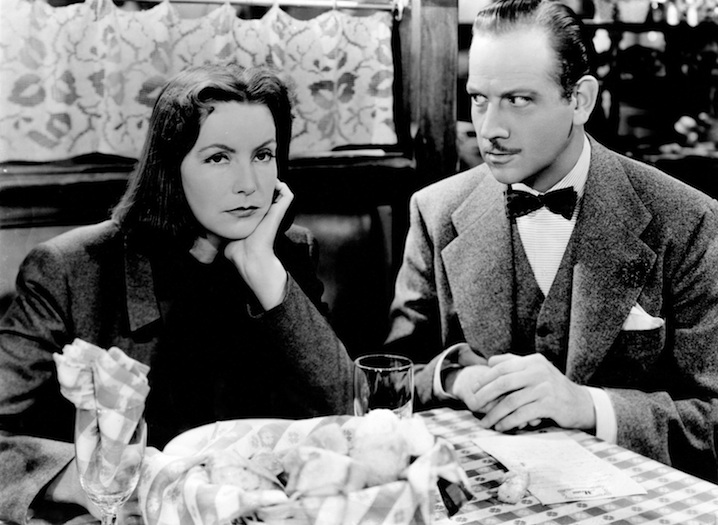
Ernst Lubitsch is recognized as his generation’s master of comedy, and his style quickly became a staple of the genre’s storytelling: Billy Wilder, the best comedy director of the following generation, idolized the so-called “Lubitsch touch”.
Ninotchka is a good example of the “touch”; when it was released, it garnered much attention because of an advertising campaign that centered on the fact that the protagonist, Greta Garbo, displayed on of her rare comedic performances (the tagline was “Garbo laughs!”).
This was aptly done, since her character, the titular Ninotchka, spends part of the film as a strict Russian agent in Paris but then looses herself; Ninotchka and the three comrades she was initially sent to replace after they decided to stay in Paris all fall in love and adapt to the Western way of life.
The three Russian’s fascination for the city summons a whole attitude towards the city: for those who come from far away, Paris is the place where all the fun, the temptations, and the joy of life are hidden, and who hasn’t thought at least once about moving to France and living the Parisian life?
14. Belle de Jour
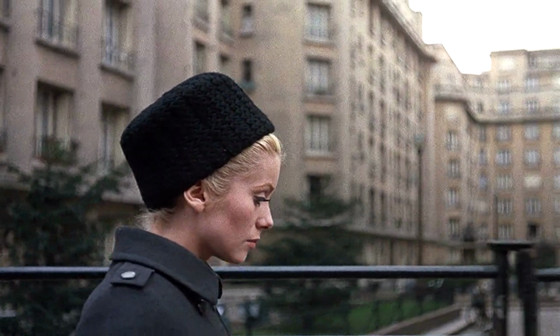
For the viewer, Belle de Jour becomes an instantly unforgettable movie as soon as Catherine Deneuve makes her first appearance. Her performance as Séverine Serizy, a married woman who only seems to find solace in her life when she joins a brothel as an high-class prostitute, is maybe the definitive depiction of the “troubled but fascinating French woman” stereotype, along with some performances by Jeanne Moreau.
Director Luis Buñuel spends most of the picture following her character and as one should expect from a Buñuel feature, the line between realism and surrealism is continuously blurred: the first scene is an oneiric fantasy, while the last one seemingly subverts what was shown immediately before. In between, the regular flow of the story is intermediated by other fantasies and oneiric moments.
The Paris we see in this movie is a bourgeois one, full of frustrated businessmen like the ones who go to the brothel where Séverine (now renamed “Belle”) works. It is a classy Paris which, like the protagonist herself, hides secrets and a darker side; it’s not casual that the story turns tragic when some small-time crooks intervene, almost representing the side of Paris that is usually kept hidden from the lives like the one Séverine/Belle tried to live with her husband.
13. Les Amants du Pont-Neuf
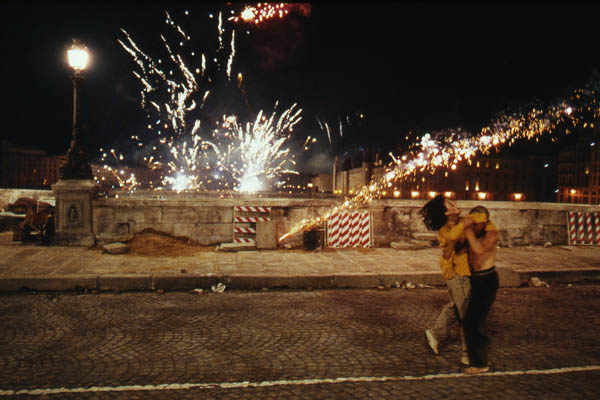
Pont-Neuf is the oldest bridge in Paris and it stands across the Seine; it has twelve arches and an equestrian statue of Henry IV, and it is connected with the Île de la Cité.
Leos Carax’s third film is centered around this historical Paris bridge where the two main characters, two troubled outsiders, fall in love and start living together, wandering around and trying to experience as much of each other as they can. Their drunken and exhilarating romance is a façade for their internal anguish, one of them being an addicted vagrant (Denis Lavant, years later also in Carax’s Holy Motors), the other one an aspiring artist who is tragically starting to lose her sight.
There are many unforgettable sequence in this movie, and in fact one could argue that Carax went too far in his virtuosistic depiction of mad love; still, the protagonists’ dance against Paris’s fireworks for the bicentennial celebration, with a continuously changing score underneath it, has rightly found his place in shared cinema memory.
12. Midnight in Paris
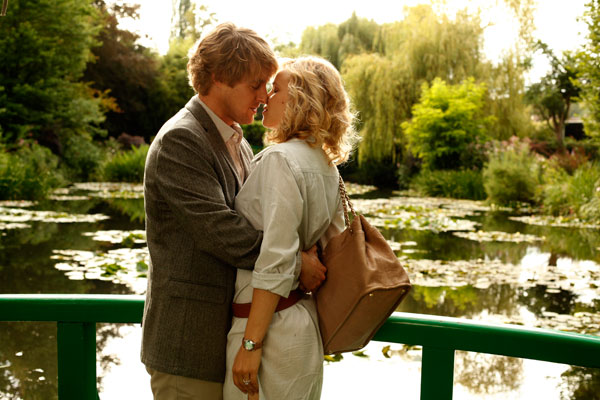
The career of Woody Allen has seen its ups and downs, both critically and commercially, but he has always been able to recover from his less artistically satisfying periods by making a good film which is immediately recognized as one of his masterpieces. This was the case of Midnight in Paris (2011).
The film stars Owen Wilson as one of the recurring “Allenesque” characters, the talented but problematic man with frustrated artistic ambitions, and it is one of the Europe-set films Woody Allen started making in the second half of the 2000’s, beginning with Match Point.
The Paris we see in the film is revealed to the viewer through the eyes of the protagonist, who feels undoubtedly out of place (he is the stereotypical American tourist) but also comprehends the magic that lies in the city. The film serves as a reflection on nostalgia and uses a supernatural plot device (time travel to the 1920’s) to show the city during one of its most lively moments, when legendary figures passed through it and through its bars and streets.
A balanced and charming movie, Midnight in Paris is also one of the most affectionate cinematographic love letters to Paris, and it has the additional value of epitomizing Paris’ allure through the unforgettable character played by Marion Cotillard.
11. Three Colours: Blue
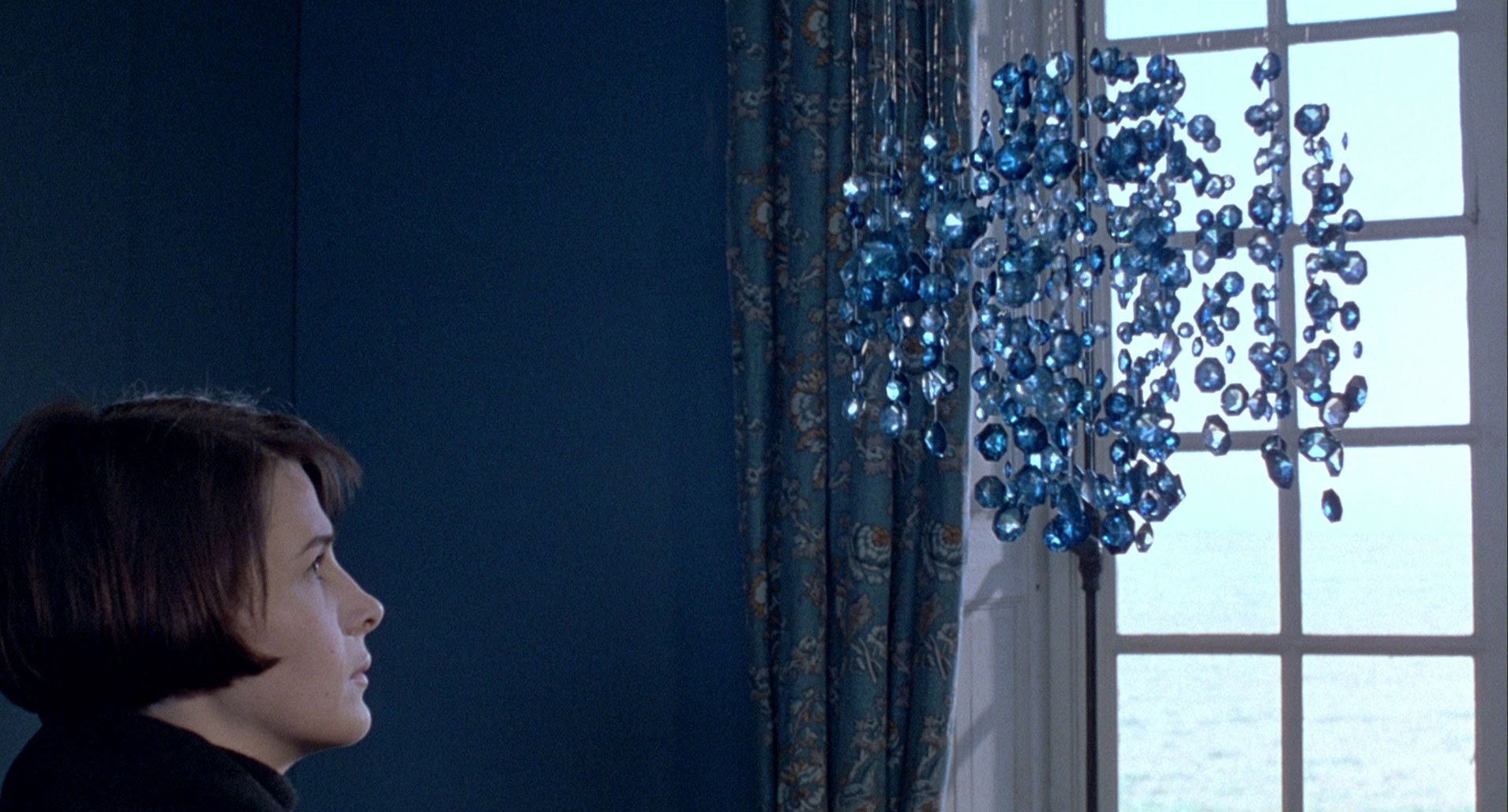
Krzysztof Kieslowski is the Polish director behind such works as The Decalogue and The Double Life of Veronique. In 1993, with Three Colours: Blue, he started a new trilogy loosely themed around the three ideals of the French Revolution, liberty, equality and fraternity.
The first chapter of the trilogy revolves around Juliette Binoche’s character and her pursue of a relations-free existence after she loses her husband and her daughter in a car accident. In order to do this, she moves from her family’s house in the country into a Paris apartment.
The film then follows the failure of her attempt of isolation, when her husband’s real life, as well as an uncompleted work of his, are revealed; music is central to the plot, and it constantly follows the protagonist, a musician herself.
The film is about liberty, the first of the three revolutionary ideals, not in its political form but in its emotional one, and that is what Juliette Binoche’s character seems to reach, even though after a journey made of the kind of pain she would not have known in her life before the accident.
10. La Haine

The defining “banlieue” movie, La Haine (which means “hate”) shows a restricted time in the life of three young men of suburban Paris; their relationship with violence and society comes to a dramatic climax during the 19 hours depicted in the film.
After a riot, Vincent Cassel’s character Vinz finds a gun which obsesses him as a potential tool of vengeance against society and policemen in particular. More in general, the film is an accomplished attempt at a realistic and gritty style which depicts everyday suburban life, in its rare and simple pleasures as well in its many frustrations.
La Haine is an unapologetic and compelling modern tale of social distress, and its description of the Parisian banlieues is perfectly apt for the contemporary social discussion about city suburbs and how to survive them.
9. L’Atalante

L’Atalante is the only full-length feature by Jean Vigo, who died of tuberculosis in 1934 shortly after the first cut of the film.
The protagonist are Jean, a barge captain, and Juliette, the young woman he marries; together, they sail until they get to Paris, a city whose allure and temptations make Juliette escape from the barge after an argument with Jean whothen starts longing for his beloved.
The story is a not particularly original love story with an obligatory happy ending, but L’Atalante is recognized by critics as a filmmaking masterpiece and, despite being a commercial and critical failure at the time of release, after World War II it gained a cult status. Among the directors who admired and homaged the film there are Bernardo Bertolucci, Luigi Comencini and François Truffaut.
The film is notable for his deviation from completely realistic storytelling: L’Atalante is one of the earliest examples of the poetic kind of cinema France often offers to the world, as some of the other films on this list prove. This non-realistic approach reaches its height in the famous and almost surrealistic underwater scene, when Jean sees a vision of his beloved wife laughing.